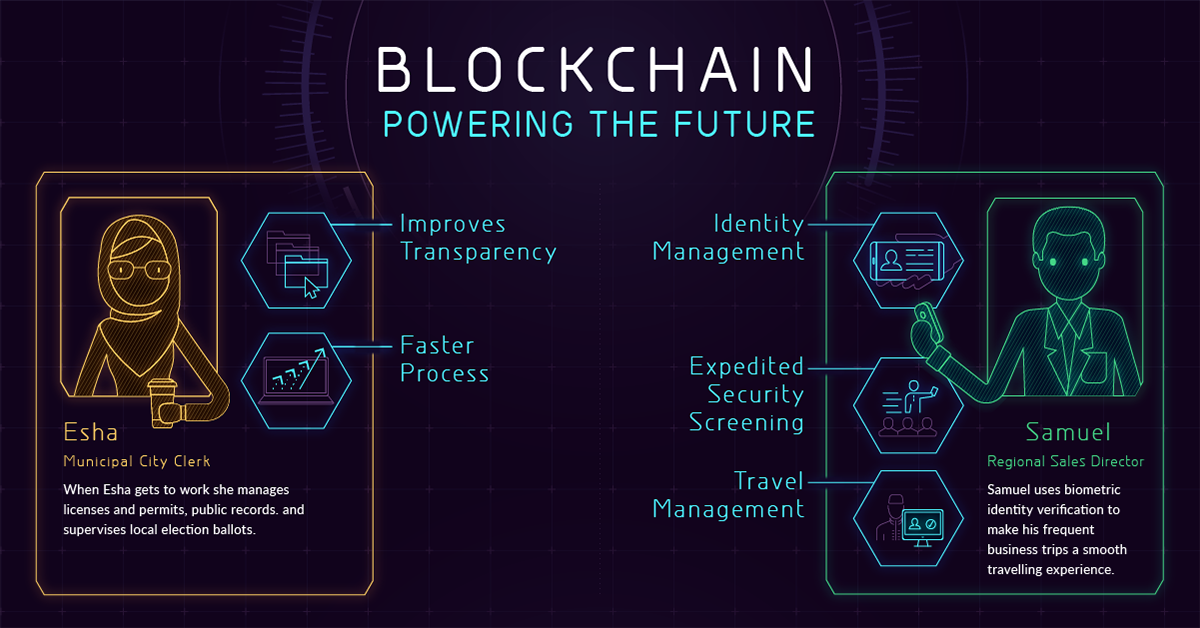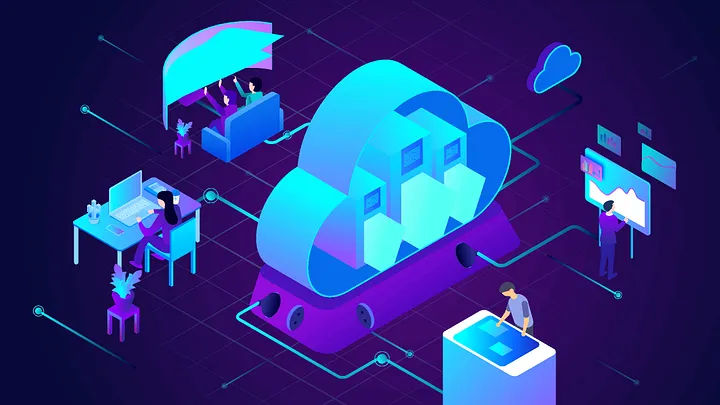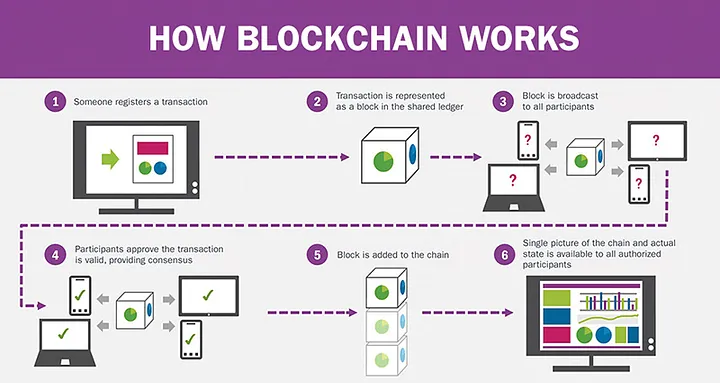- Published on
Everything You Need to Know About Blockchain Technology
6 min read
- Authors
- Name
- Sajid Javed
- @sajid.javed

Table of Contents
Ever wondered if there’s an easier way to complete transactions without having to deal with online wallets, banks, and third-party applications? Well, there is. Today, we’ll take an extensive look into the blockchain, how it works, and everything there is to know about blockchain.
For the non-technical folks, who are not really familiar with the terms cryptographic signatures, smart contracts, transactions, asset, and consensus, here’s a really popular example used to describe these terms by Kim Kulp.
Imagine a school lunch table with a bunch of kids sitting at it. Two kids want to trade lunches. Kid A says: ‘I’ll trade you lunch if you have a cookie’ to Kid B. Kid B states that he does have a cookie and the two trade lunch. As the kids trade lunches, the Principal comes over and asks: ‘What’s going on here.’ At which point all the kids at the table speak up and say Kid A traded lunch with Kid B.
This simple story outlines the basics of blockchain. Kid A and B are ‘participants,’ also known as actors, in the blockchain. Lunch is an asset. Trading lunch is the transaction. Whether Kid A’s lunch contains a cookie is a smart contract. Finally, the Principal’s review is the consensus to approve/validate the transaction.
In a nutshell, Blockchain is the process of participants engaging in transactions around assets. The consensus is used to validate the transaction and smart contracts are used to set parameters around the transaction.
What is Blockchain?
Blockchain can be defined as a chain of blocks that contains information. The technique is intended to timestamp digital documents so that it’s not possible to backdate them or temper them. The purpose of blockchain is to solve the double records problem without the need for a central server.
The blockchain is used for the secure transfer of items like money, property, contracts, etc. without requiring a third-party intermediary like a bank or government. Once data is recorded inside a blockchain, it is very difficult to change it.
The blockchain is a software protocol (like SMTP is for email). It consists of several pieces: a database, software application, some connected computers, etc.
What is Blockchain Technology?

Blockchain, which began to emerge as a real-world technology option in 2016 and 2017, is poised to change IT in much the same way as open-source software did a quarter-century ago. And in the same way, Linux took more than a decade to become a cornerstone in modern application development, Blockchain will likely take years to become a lower cost, more efficient way to share information and data between open and private business networks.
Blockchain, sometimes referred to as Distributed Ledger Technology (DLT), makes the history of any digital asset unalterable and transparent through the use of decentralization and cryptographic hashing.
A simple analogy for understanding blockchain technology is a Google Doc. When we create a document and share it with a group of people, the document is distributed instead of copied or transferred. This creates a decentralized distribution chain that gives everyone access to the doc is being recorded in real-time, making changes completely transparent.
Of course, blockchain is more complicated than a Google Doc, but the analogy is apt because it illustrates three critical ideas of the technology:
Blockchain is an especially promising and revolutionary technology because it helps reduce risk, stamps out fraud, and brings transparency in a scalable way for myriad uses.
The whole point of using a blockchain is to let people — in particular, people who don’t trust one another — share valuable data in a secure, tamper-proof way.
How Does Blockchain Works?

Blockchain consists of three important concepts: blocks, nodes, and miners.
Blocks: Every block contains data, a hash, and the hash of the previous block. The data stored inside a block depends on the type of blockchain.
Miners: Miners create new blocks on the chain through a process called mining. In the case of Bitcoin, it takes about 10 minutes to calculate the required proof-of-work to add a new block to the chain.
Nodes: One of the most important concepts in blockchain technology is decentralization. Nodes are any kind of electronic device that maintains copies of the blockchain and keeps the network functioning.
What Makes Blockchains So Secure?

Blockchains are secured through a variety of mechanisms that include advanced cryptographic techniques and mathematical models of behavior and decision-making. They rely heavily on cryptography to achieve their data security. In this context, the so-called cryptographic hashing functions are of fundamental importance.
How Blockchain Transaction Works?
- A person requests a transaction.
- The transaction is broadcasted to a P2P network with the help of nodes.
- The network of nodes validates the transaction and the user’s status.
- Once the transaction is complete, the new block is added to the existing blockchain in a way that is permanent and unalterable.
Blockchain vs. Banks — Are Bitcoins Better Than Banks?
Banks and decentralized blockchains are vastly different. To see how a bank differs from blockchain, let’s compare the banking system to Bitcoin’s implementation of blockchain.
Important Real-Life Use Cases of Blockchain
- Dubai: The Smart City - In 2016, the smart Dubai office introduced the Blockchain strategy.
- Incent Customer retention - Incent is CRaaS (Consumer retention as a service) based on Blockchain technology.
- Blockchain for Humanitarian Aid - In January 2017, the UN world food program started a project called humanitarian aid.
- Cryptocurrency: Most Popular Application - A cryptocurrency is a form of payment that can be exchanged online for goods and services.
Summary
Through the use of cryptography, blockchains are able to attain high levels of security as distributed systems. As with nearly all systems, however, it is critical that these two fields of knowledge are properly applied. A careful balance between decentralization and security is vital to building a reliable and effective cryptocurrency network.
In the meantime, if you have any questions or suggestions, feel free to drop them in the comments. Cheers!✌